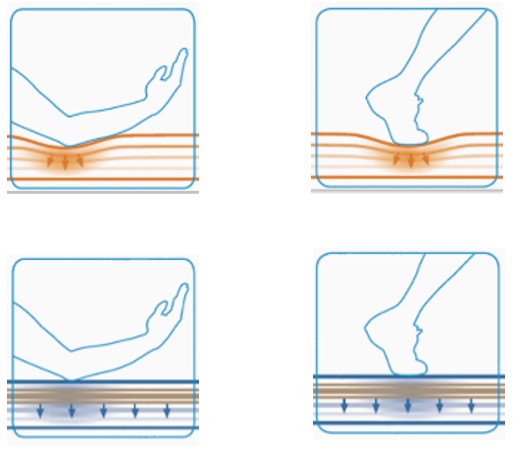Force reduction – a decisive variable in the creation of the optimal athletics flooring
1. March 2022
If athletics competitions are to deliver outstanding results, they must have professional running tracks. New running tracks must now have World Athletics certificates for competition venues. If top events such as World and European Championships or Diamond League are to be held in any venue in the future, that venue must have a World Athletics Facility Certificate Class 1. The certificate includes specific requirements and target values for a running track suitable for competition.

The so-called ‘force reduction’, among other things, is of decisive importance. That characteristic quantifies the resilience of a floor, from which a protective function for the general load on joints, muscles and ligaments can be derived.
To acquire comparable parameters for building sports facilities, a measurement method was developed – the so-called ‘Artificial Athlete Berlin’. This tester is used to measure the force reduction. Force reduction is the ability of a sports floor to absorb the shock of impact of a body falling on the surface. The more pliable the floor, the greater the determined value. In comparison: For concrete floors, the value is zero; that is, the entire force of the impact must be absorbed by the athlete. The higher the shock absorption, the more force is absorbed by the ground.
Protection of joints, muscles, ligaments
A high force reduction reduces stress on joints, muscles and ligaments, is ideal for training and school/recreational sports, and gives better protection against long-term damage. For competitive athletes, it’s not perfect: A floor that is too soft – that absorbs a lot of power – will affect performance. Depending on the discipline, high-performance athletes have different requirements. Marathon runners prefer softer surfaces, for example, while sprinters prefer harder ones.

Preventing injuries
Force reduction is also important for preventing injuries that can result from uncontrolled contact with the ground or from falls. The softer a floor is, the greater the force reduction and the higher the protective function. High shock absorption reduces the risk of injury.
Factors in choosing a sports floor
A higher shock absorption value is not necessarily better when it comes to choosing the floor; that choice will depend on the user and the type of use.
The following factors are also relevant:
- Age/weight of the (main users)
- Sport (main use)
- Use for training or competition
- Use for other purposes (events)
In outdoor areas, it is recommended that synthetic surfaces for training facilities have a higher shock absorption (i.e. higher force reduction) than competition facilities. The dynamic interaction between athlete and floor is extremely complex and hugely important for the athlete’s performance and safety.
World Athletics Facility Certificate
For WA-certified running tracks, the guideline values for force reduction are from 35–50% (at a surface temperature between 10°C and 40°C).*
To gain a World Athletics Facility Certificate, the installed running track must have a WA product certificate. Conica can produce this certificate for a range of running tracks – from proven world-class credentials to demanding school and grassroots sport. An accredited testing body (approved by the WA) will assess whether the specifications are met and whether all lines, dimensions and distances comply with the World Athletics guidelines.
Conclusion
The art here lies in finding the best compromise between the needs of the different disciplines and/or users.
That’s why Conica is the expert!
*Source: IAAF Track and Field Facilities Manual – World Athletics
